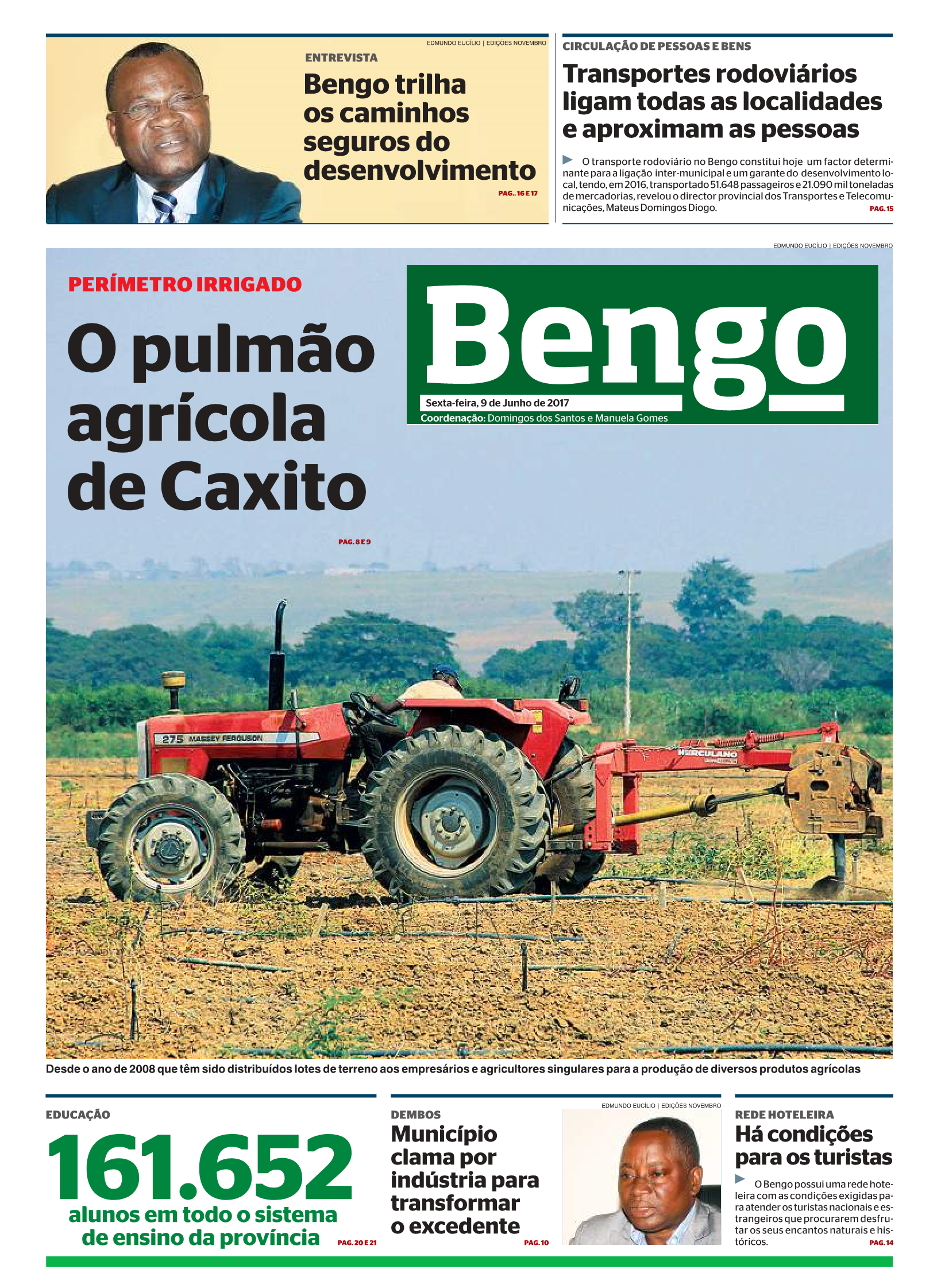RECHERCHES ACTUELLES ET PERSPECTIVES POUR LA CONSERVATION ET LE DÉVELOPPEMENT
Formulação de um Programa para a implementação da Convenção das Nações Unidas de Combate a Desertificação (UNCCD) nos países da CPLP
A localização geográfica de Moçambique nos trópicos e subtrópicos, faz com que ele seja vulnerável a eventos extremos de origem meteorológica tais como secas, cheias e ciclones tropicais e de origem geológica como é o caso de sismos e tsunamis. Dentre as diversas zonas do país, as áridas, semi-áridas e sub-húmidas secas são as mais vulneráveis, devido à degradação da terra caracterizada por perda persistente de productividade de vegetação, solos e pastagens e exacerbada pelo seu uso inapropriado (UNDP, 1992). As regiões sul e parte do centro do país são as mais afectadas pela seca.
O pulmão agrícola de Caxito
Suplemento do Jornal de Angola sobre agricultura e desenvolvimento
Programa Nacional de Alimentação Escolar – Pnae
Para que esta publicação possa cumprir seu propósito, é necessário entender a importância do controle social para a formulação e implementação de políticas públicas no Brasil e sua ligação com aconstrução de uma sociedade democrática.
Understanding changing land access and use by the rural poor in Ghana
In Ghana 70 per cent of the population are smallholder farmers who depend on the land for their basic needs. Growing competition for this resource is having significant impacts on rural livelihoods and governance as land changes hands. This study highlights the key drivers of pressure on rural land and their communities, such as population growth, urbanisation and acquisition of land by new actors, including government and business.
Agricultural Land Fragmentation at Urban Fringes: An Application of Urban-To-Rural Gradient Analysis in Adelaide
One of the major consequences of expansive urban growth is the degradation and loss of productive agricultural land and agroecosystem functions. Four landscape metrics—Percentage of Land (PLAND), Mean Parcel Size (MPS), Parcel Density (PD), and Modified Simpson’s Diversity Index (MSDI)—were calculated for 1 km × 1 km cells along three 50 km-long transects that extend out from the Adelaide CBD, in order to analyze variations in landscape structures. Each transect has different land uses beyond the built-up area, and they differ in topography, soils, and rates of urban expansion.
Land Redistribution and Reutilization in the Context of Migration in Rural Nepal
Land is an integral part of people’s culture, economy, and livelihoods. Social and temporal mobility of people affect land acquisition, distribution, and utilization, which consequently impacts on food security and human wellbeing. Using the data collected by means of household survey, focus group discussions, in-depth interviews, and participant observation, this paper examines the dynamics of land-people relationships, mainly acquisition, redistribution, and reutilization of land, in the context of human migration.
Forest Transitions and Rural Livelihoods: Multiple Pathways of Smallholder Teak Expansion in Northern Laos
Smallholder teak (Tectona grandis) plantations have been identified as a potentially valuable component of upland farming systems in northern Laos that can contribute to a “livelihood transition” from subsistence-oriented swidden agriculture to a more commercially-oriented farming system, thereby bringing about a “forest transition” at the landscape scale. In recent years, teak smallholdings have become increasingly prominent in the province of Luang Prabang, especially in villages close to Luang Prabang City.
Villages in the City: Spatial and Temporal Heterogeneity in Rurality and Urbanity in Bangalore, India
Urban-rural distinctions are particularly challenging in the context of fast growing cities in the developing world. Through an example of the Indian city of Bangalore, we demonstrate the case for development of more continuous approaches of urban representation that are needed in many parts of the world. Thus even some of the oldest areas in Bangalore, which have been part of an urban center for centuries, exhibit aspects of rurality, as much as other recently developing peri-urban parts of the city.
Rural-Urban Transition in Central Java: Population and Economic Structural Changes Based on Cluster Analysis
In Central Java, in addition to the traditional view of urban transition as an aspect of urban industrialization, rural industrialization based on small- to medium-sized enterprises has become a concern, at least since the Indonesian economic crisis in 1997. Combinations of typical urban and rural activities have resulted in certain features of rural-urban transition as the urban population has continued to increase notably. The intention of this paper is to examine how rural-urban transition characterizes the industrialization of Central Java.
Leaving no one behind: internal displacement and the New Urban Agenda
Many internally displaced people (IDPs) find refuge in cities. However, the scale of global urban internal displacement caused by violence, conflict, disasters and development projects is unknown. Cities struggle to accommodate IDPs since their movements are largely spontaneous, and some authorities may resist helping IDPs for fear of encouraging further influxes. Meanwhile, IDPs face displacement-specific challenges to rebuild their lives in urban settings and may be displaced again in the process due to lack of housing tenure security and violence and insecurity.






